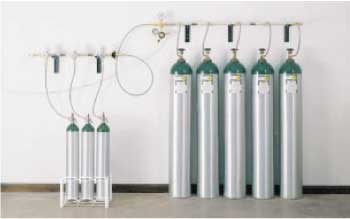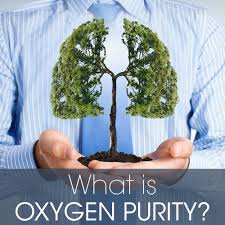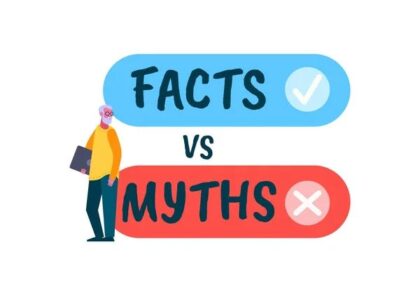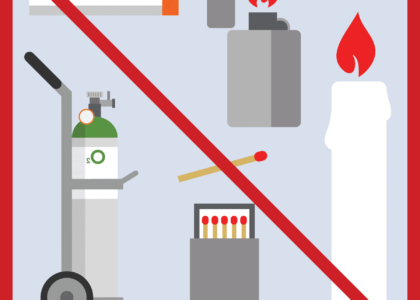Medical vs. Industrial Oxygen Cylinders: What’s the Difference?
Introduction
Oxygen is life-saving—but not all oxygen is created equal. You’ve likely heard about medical oxygen and industrial oxygen, but did you know using the wrong type can lead to serious consequences? Whether you’re a patient, caregiver, or supplier, it’s essential to understand the differences between these two types of oxygen cylinders. Let’s break it down in simple terms.
Understanding Oxygen Types
What is Medical Oxygen?
Medical oxygen is a highly purified form of oxygen used in hospitals, clinics, ambulances, and even at home. It meets strict pharmaceutical standards and is safe for breathing. It’s used to treat patients with respiratory diseases, COVID-19, asthma, heart conditions, and more.
What is Industrial Oxygen?
Industrial oxygen is primarily used in manufacturing, welding, cutting, and chemical processes. While it may seem similar in appearance, it doesn’t meet the stringent purity standards required for human inhalation.
Key Differences Between Medical and Industrial Oxygen
Purity Standards
Medical oxygen typically has a purity of 99% or more, with zero tolerance for contaminants like moisture, carbon monoxide, or hydrocarbons. Industrial oxygen, on the other hand, may contain impurities that are harmless in technical processes but dangerous for humans.
Certification and Regulation
Medical oxygen is regulated by drug authorities like the FDA (U.S.) or CDSCO (India). It must be produced in licensed facilities and certified for medical use. Industrial oxygen doesn’t require the same level of oversight, making it unsuitable for healthcare.
Cylinder Labeling and Color Codes
Medical cylinders are often color-coded (commonly white or green tops) and clearly labeled with “Medical Oxygen.” Industrial cylinders might be coded differently and lack any mention of medical use. Always read the label.
Intended Use
The purpose of the gas makes all the difference. Medical oxygen supports life and health. Industrial oxygen supports machines, metalwork, and manufacturing.
Production and Filling Process
Medical oxygen is produced, stored, and filled under sterile conditions. The equipment used is regularly cleaned and disinfected. Industrial oxygen cylinders don’t follow such procedures, increasing the risk of contamination.
Risk Factors and Safety Concerns
Using industrial oxygen for medical needs can lead to poisoning, lung damage, or even death. It’s not just unsafe—it’s life-threatening.
Why You Should Never Substitute Industrial Oxygen for Medical Use
Health Hazards
Breathing industrial oxygen can expose patients to dangerous levels of contaminants. Even trace amounts of oil, rust, or chemicals can cause severe lung infections or toxic reactions.
Legal and Compliance Issues
Supplying or using industrial oxygen for medical purposes is illegal in many countries. It can result in heavy fines, license cancellation, or even criminal charges.
How to Identify the Right Cylinder for Medical Needs
Look for Certified Suppliers
Always buy from licensed medical gas providers. They follow government protocols and ensure the cylinders meet health standards.
Read Labels and Check Seals
Genuine medical oxygen cylinders will have proper labeling, expiry date, batch number, and a safety seal. If it looks suspicious, don’t use it.
Ask for Purity Certification
A trusted supplier will never hesitate to provide a certificate of analysis proving the oxygen’s purity. Don’t skip this step.
Tips for Safe Usage of Medical Oxygen Cylinders
Storage Guidelines
Keep cylinders upright, in a cool and dry place, away from sunlight, flames, or electrical sources. Use a cylinder stand if needed.
Handling and Usage Safety
Never use oil or grease on cylinder parts. Open valves slowly and use proper regulators. Don’t tamper with fittings unless you’re trained.
Regular Maintenance and Refill Checks
Get your cylinders checked periodically. Ensure there’s no leakage, rust, or wear. Always refill from an authorized refill center.

FAQs
Q1. Can I use industrial oxygen in an emergency if medical oxygen is unavailable?
A: No. Industrial oxygen is not safe for human use and can cause serious health issues.
Q2. How can I identify a medical oxygen cylinder?
A: Look for color coding, proper labeling, and safety seals. Only use cylinders from licensed medical suppliers.
Q3. What is the risk of using contaminated oxygen?
A: Contaminated oxygen can cause respiratory infections, chemical burns in the lungs, and even death.
Q4. Is medical oxygen more expensive than industrial oxygen?
A: Yes, because it goes through strict purification, quality control, and regulated handling.
Q5. Can I store medical and industrial cylinders together?
A: No. They should be stored separately to avoid confusion and accidental misuse.
Conclusion
Choosing the right type of oxygen cylinder isn’t just a technical decision—it’s a matter of life and safety. While medical and industrial oxygen may look similar, they serve entirely different purposes and follow different safety, purity, and regulatory standards. Medical oxygen is specifically designed for human use, purified to the highest degree, and handled under strict health guidelines. Industrial oxygen, on the other hand, is intended for machines and processes—not for breathing.
Substituting one for the other can have dangerous consequences, including serious health risks and legal penalties. Whether you’re a caregiver, a patient, or a supplier, always ensure you’re using certified medical oxygen from a trusted source. In times of need, especially during emergencies like the COVID-19 pandemic, misinformation and panic can lead to poor decisions—but being informed helps you stay safe.
At the end of the day, when it comes to oxygen, purity and purpose matter most. Always choose wisely.





